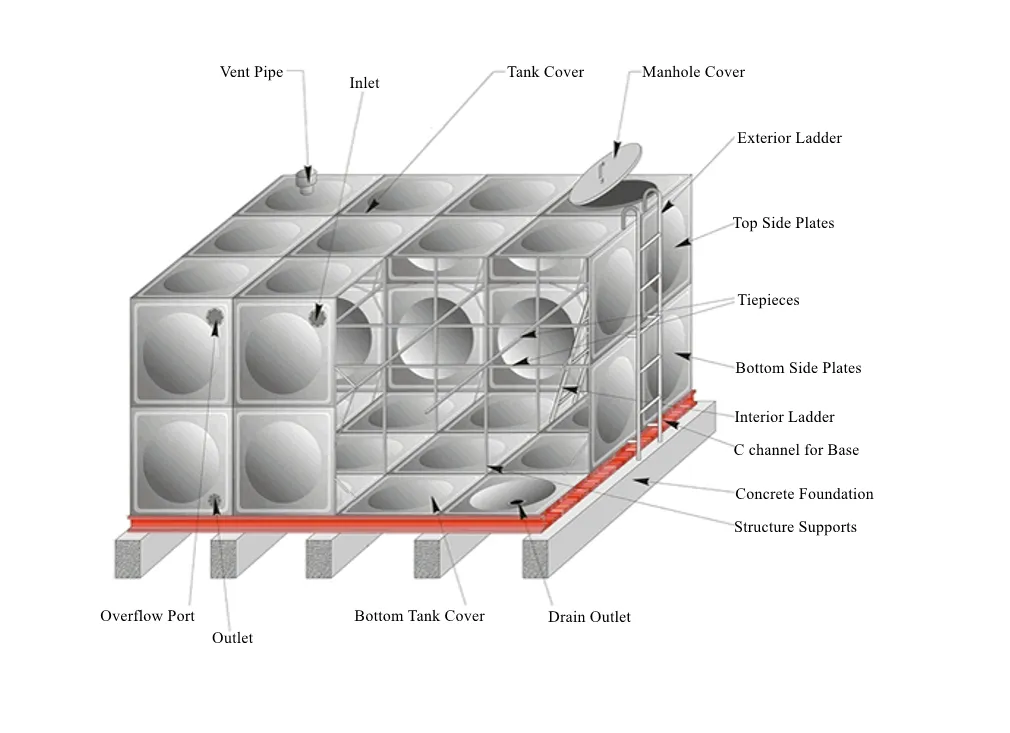loading...
- No. 9, Xingyuan South Street, Dongwaihuan Road, Zaoqiang County, Hengshui, Hebei, China
- admin@zjcomposites.com
- +86 15097380338
- Welcome to visit our website!
Durable Fiberglass Walkways for Safe and Efficient Outdoor Pathways
The Benefits and Applications of Fibreglass Walkways
In recent years, the use of fibreglass walkways has gained tremendous popularity across various industries and environments. Known for their durability, versatility, and lightweight nature, fibreglass walkways offer a range of benefits that make them an ideal choice for both industrial and recreational applications. This article delves into the features, advantages, and uses of fibreglass walkways, demonstrating why they have become a preferred material in many situations.
What is Fibreglass?
Fibreglass, or glass-reinforced plastic (GRP), is a composite material made from a plastic matrix reinforced with glass fibers. This combination gives fibreglass remarkable strength and flexibility while remaining significantly lighter than many traditional building materials such as wood or metal. The inherent properties of fibreglass—such as resistance to corrosion and moisture—make it an excellent option for constructing walkways.
Key Benefits of Fibreglass Walkways
1. Durability Fibreglass walkways are designed to withstand harsh environmental conditions, including extreme temperatures, heavy foot traffic, and chemical exposure. Unlike wood, which can warp or rot, fibreglass maintains its integrity over time, ensuring a long-lasting solution.
2. Lightweight One of the most compelling features of fibreglass walkways is their lightweight nature. This property not only facilitates easier installation but also reduces the overall structural load, making them suitable for applications where weight is a critical factor.
3. Slip Resistance Safety is a paramount concern in any walkway application, and fibreglass walkways often come with slip-resistant surfaces. This feature helps to reduce the risk of slips and falls, especially in wet or oily conditions, making them ideal for industrial sites and recreational areas alike.
4. Low Maintenance Unlike wood or metal structures, fibreglass walkways require minimal maintenance. They do not need to be painted, stained, or sealed, which reduces long-term costs and labor. A simple washdown is usually enough to keep them looking clean and functional.
5. Customization Fibreglass walkways can be manufactured in various shapes, sizes, and colors, allowing for flexibility in design. Whether for a small nature trail or a large industrial site, fibreglass can be tailored to meet specific requirements.
fibreglass walkway

Applications of Fibreglass Walkways
Fibreglass walkways have found applications in numerous sectors, demonstrating their versatility and effectiveness. Some notable applications include
1. Industrial Settings In factories and warehouses, fibreglass walkways are used for catwalks, maintenance access, and elevated pathways. Their ability to resist chemicals and corrosion makes them particularly suited for environments where hazardous materials are present.
2. Marine and Coastal Areas Fibreglass is commonly used in marine environments due to its resistance to saltwater and moisture. Walkways installed in docks, marinas, and coastal resorts provide safe and durable access for both workers and visitors.
3. Recreational Spaces Parks, nature reserves, and wildlife sanctuaries often utilize fibreglass walkways to enhance visitors' experiences. The lightweight and aesthetic properties of fibreglass allow for integrating these walkways into natural settings without detracting from the environment.
4. Public Infrastructure Many urban areas are adopting fibreglass walkways for pedestrian bridges and overpasses. Their lightweight design makes them easier to install in busy locations, while their durability ensures they can withstand heavy foot traffic.
5. Agriculture In agricultural settings, fibreglass walkways can provide safe passage through fields, reducing soil compaction and minimizing damage to crops. Their strength allows them to support equipment and personnel effectively.
Conclusion
In conclusion, fibreglass walkways offer a multitude of benefits that make them an excellent choice for a variety of applications. Their durability, lightweight nature, slip resistance, and low maintenance requirements set them apart from traditional materials. As industries increasingly recognize the advantages of fibreglass, its usage will likely continue to expand, paving the way for safer, more efficient, and environmentally friendly walking surfaces. With these remarkable attributes, fibreglass walkways are indeed leading the way in modern construction and infrastructure development.
-
The Rise of FRP Profiles: Strong, Lightweight, and Built to LastNewsJul.14,2025
-
SMC Panel Tanks: A Modern Water Storage Solution for All EnvironmentsNewsJul.14,2025
-
GRP Grating: A Modern Solution for Safe and Durable Access SystemsNewsJul.14,2025
-
Galvanized Steel Water Tanks: Durable, Reliable, and Ready for UseNewsJul.14,2025
-
FRP Mini Mesh Grating: The Safer, Smarter Flooring SolutionNewsJul.14,2025
-
Exploring FRP Vessels: Durable Solutions for Modern Fluid HandlingNewsJul.14,2025
-
GRP Structures: The Future of Lightweight, High-Performance EngineeringNewsJun.20,2025
